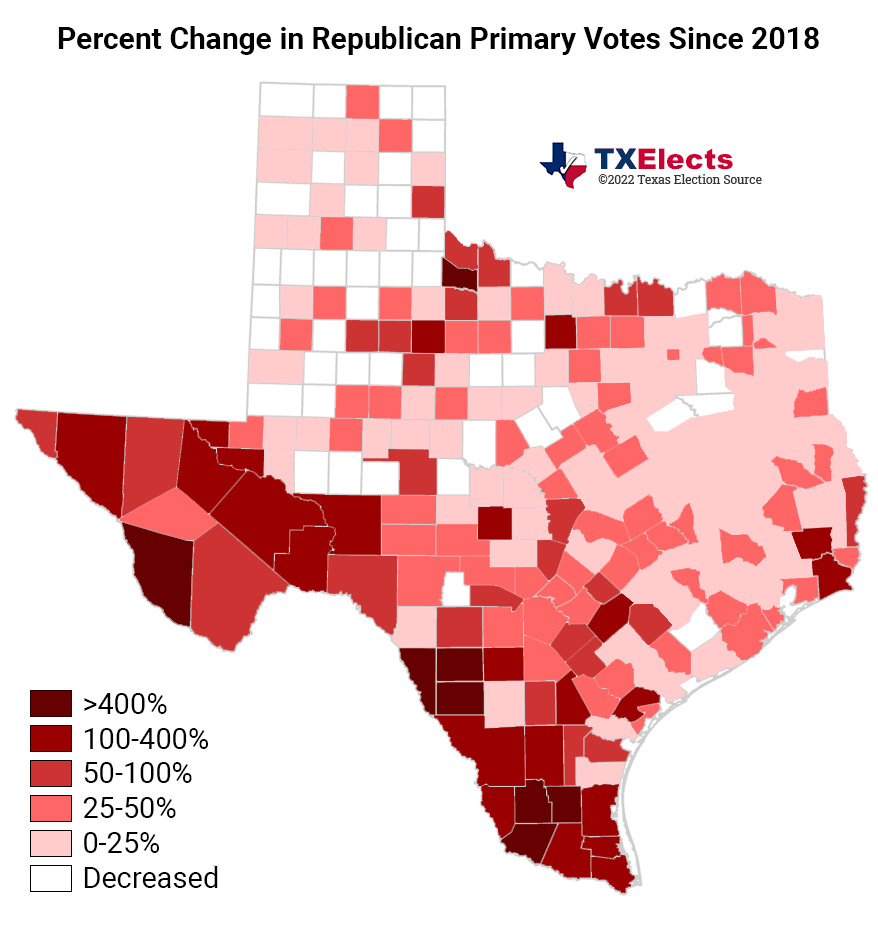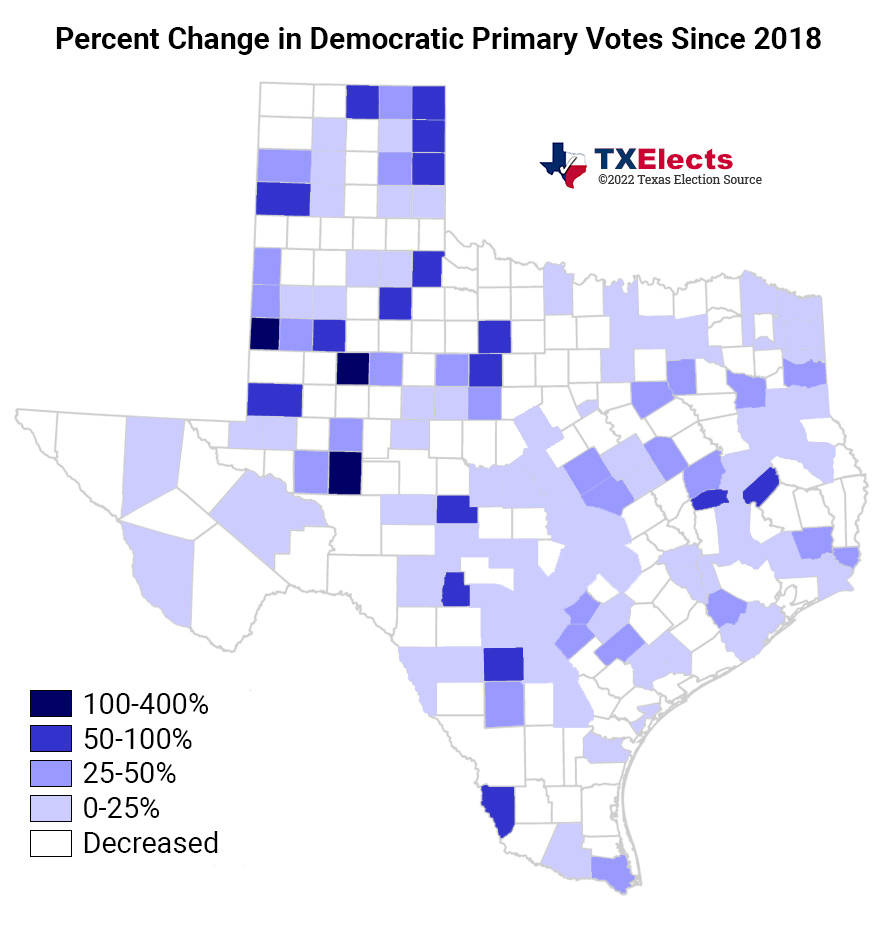Texas saw record turnout for last night’s (Tuesday’s) gubernatorial election, and it also saw record levels of non-participation.
Some votes remain to be counted, but turnout numbers are expected to rise outside of rounding errors. Just shy of 3M Texans cast a ballot for a candidate for governor, the highest-ever combined number of votes cast for a gubernatorial primary election and the fourth-most for any primary election. Combined primary turnout statewide was 17.4% of registered voters, a whisker above 2018 (17.0%) and the highest combined turnout for a gubernatorial primary election since 1994 (17.6%).
Almost as many voters participated in this year’s Republican primary (1.94M) as in 2020 (2.00M), making it the third-highest vote total in state history for any Republican primary. Nearly 400K more votes were cast this year than in 2018 (1.55M), which was the previous record for a Republican gubernatorial primary election. It was the 8th straight Republican primary to eclipse 1M votes.
Republican turnout was 11.3% of registered voters, the fifth highest turnout percentage for a Republican primary in state history and the second highest percentage for a gubernatorial election, trailing only 2010 (11.4%). Republican turnout has exceeded 10% of registered voters in seven of the last eight primary elections.
In 207 counties, more people voted in the Republican primary this year than in 2018, and turnout more than doubled in 31 counties, mostly in South and West Texas.
One of the most dramatic increases occurred in Starr Co., where 15 people voted in the 2018 Republican primary. Nearly 1,800 people voted in this year’s primary, a boost coming in part from the party switch of Rep. Ryan Guillen (R-Rio Grande City). The Democratic Party saw an even bigger drop there as turnout fell to around 3,400 voters from 6,500.
Statewide, the number of Democratic votes eclipsed 1M for the fourth straight primary election. The total of 1.06M voters just squeaked past the 2018 turnout of 1.04M voters. More people voted in the Democratic primary than in any gubernatorial primary election since 1990, but more people voted in each Democratic primary between 1946 and 1992 than this year.
Measured as the percentage of registered voters casting ballots for Democratic gubernatorial candidates, turnout was 6.15%, a bit behind 2018 (6.8%) but an improvement over 2006 (4.0%), 2010 (5.2%) and 2014 (4.0%).
The number of Democratic voters declined in exactly half of the state’s 254 counties from 2018. The biggest percentage drop was King Co., where both Democratic voters from 2018 did not return to the polls (as Democrats). The biggest drop in vote totals was in El Paso Co., where 10K fewer people voted this year as in 2018.
However, the number of Democratic voters increased in 121 counties spread out more randomly across the state than the more geographically concentrated Republican gains.
So far, we’ve talked about the Texans who turned out to vote and the records they set. The Texans who did not turn out to vote also set a record.
Nearly 14.2M registered voters did not participate in the primaries, breaking the previous high set in 2018 by nearly 1.5M. In nine of the last 11 primaries, the number of non-voting registered voters has exceeded 10M. For just the second time in state history, at least 10M more registered voters skipped the primary than voted in it.
Approximately 2M more Texans are eligible to vote but not registered. If included in the total, then the number of non-participating Texans exceeds 16M.
Historically, even more voters skip the runoffs. The last time more people voted in the runoff than in the primary was 1954. Combined runoff turnout has exceeded 1M voters just five times and only twice since 1994 (2012, 2020). Combined turnout has exceeded 10% of registered voters just once since 1994 (2012).
There are not always statewide runoffs, so the comparisons between years are not necessarily apples-to-apples, but the trends are clear: fewer voters, lower turnout.
©2022 Texas Election Source LLC



